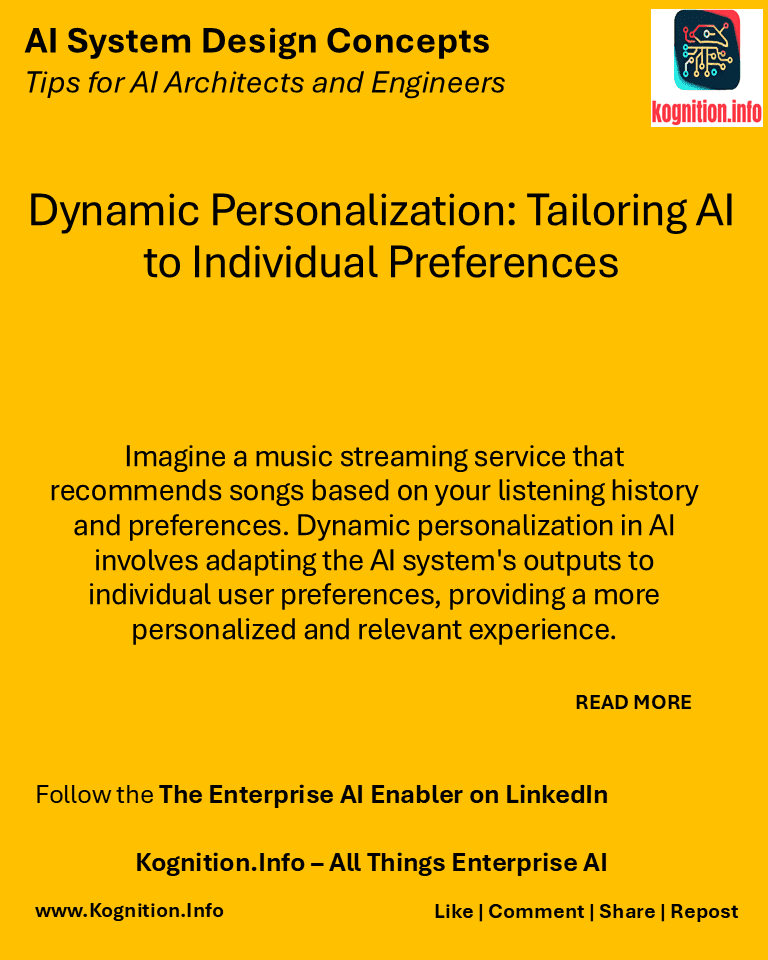
Imagine a music streaming service that recommends songs based on your listening history and preferences. Dynamic personalization in AI involves adapting the AI system’s outputs to individual user preferences, providing a more personalized and relevant experience.
Use cases:
- Personalized recommendations: Recommending products, movies, or articles based on user preferences and past behavior.
- Adaptive learning platforms: Adjusting the difficulty and pace of learning materials based on individual student needs.
- Customized user interfaces: Personalizing the layout and content of user interfaces based on user roles and preferences.
How?
- Collect user data: Gather data on user preferences, demographics, and past interactions with the AI system.
- Build user profiles: Create profiles that represent individual user preferences and characteristics.
- Develop personalization algorithms: Utilize algorithms to tailor AI outputs based on user profiles and context.
- Continuously adapt: Update user profiles and personalize outputs in real-time as user preferences evolve.
Benefits:
- Enhanced user experience: Provides a more personalized and relevant experience for each user.
- Increased engagement: Encourages user interaction and satisfaction with the AI system.
- Improved efficiency: Delivers the most relevant information and functionalities to each user, saving time and effort.
Potential pitfalls:
- Data privacy: Protect user data and ensure compliance with privacy regulations.
- Filter bubbles: Avoid creating filter bubbles that limit users’ exposure to diverse perspectives and information.
- Cold start problem: Personalization can be challenging for new users with limited data.
